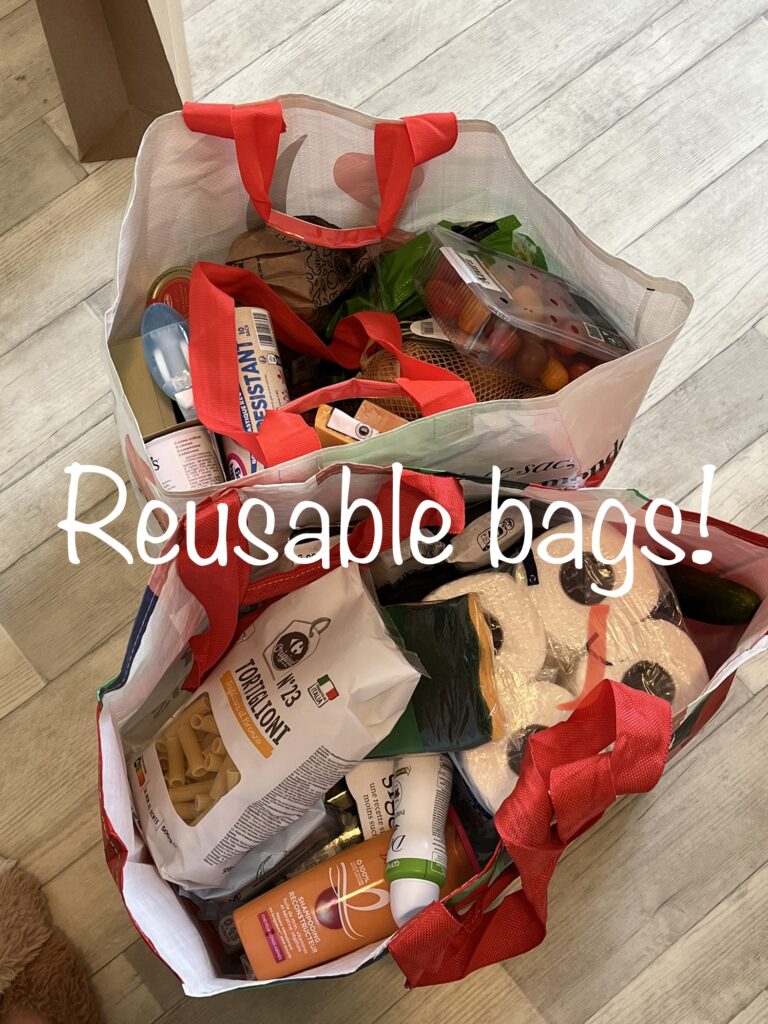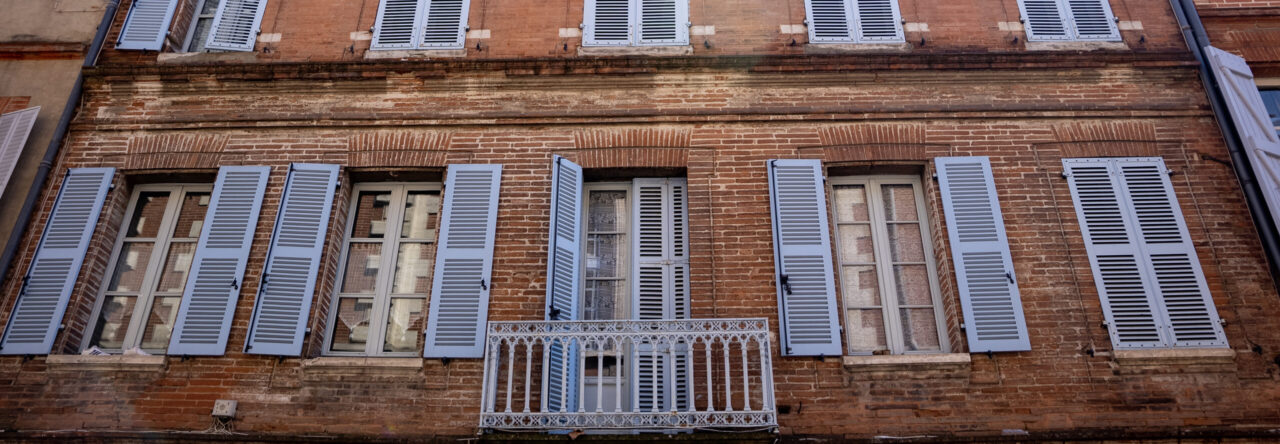Introduction
Having spent a semester studying abroad in Toulouse, we noticed a multitude of cultural differences between shopping in the United States and shopping in France. Most of these differences involve the way food is processed, distributed, and shared among people in France. Specifically, we will talk about the types of products sold, the different types of businesses, and customer service in France. We have noticed that the French prefer local products, available in small markets and bakeries in the city. Fruits and vegetables are cheaper and fresher in France, especially because Occitania is an agricultural region. As for the different types of businesses in France, there are many different types of grocery stores that vary in size and location, from pastry shops to late-night grocery stores, etc. Finally, we will discuss how customer service is more personalized in the United States than in France. We hope you find our observations interesting!
Products Sold
Many of the cultural differences in the products available for purchase in American and French
supermarkets result, intentionally or not, from the fact that French markets offer healthier choices. One intentional method of increasing health awareness about food is the “Nutri-Score”. Nutri-Score is a system that is used by large supermarkets like Carrefour and even fast food restaurants like Mcdonald’s. These stores and restaurants aim to use the system to increase transparency around nutrition and highlight their “healthier” options. The scale ranges from A to E and describes the nutritional value of a food product. Since the score is typically printed on the front of a package, it is a good way to help consumers make informed choices about the products they consume.
Overall, there are fewer convenience foods and snacks in markets, and some specialty stores don’t carry them at all. The foods and prepared products you can find have fewer preservatives for the most part. This means that food spoils much more quickly, but
on the other hand, it contributes to a more natural diet. Natural, in this context, simply refers to foods that are composed of ingredients without many treatments or additives.
For other products such as vegetables, fruits, cheeses, and meats, there is a big difference in the level of quality and freshness between the United States and France. This difference comes from the markets (which are more specialized), which we will discuss later, but also from the locality. It is common to find vegetables and fruits that were produced very
locally and therefore those that are in season. It is much easier to eat local products, and many French people make a conscious choice to eat mostly local foods in their diet. There is even a name for this philosophy: locavorism. The proximity of agricultural regions facilitates local food in the Occitan region of France (known as Région Occitanie), but the philosophy of local food is a more sustainable choice that is expanding worldwide.

The Different Types of Businesses
When you first come to France, it can be overwhelming to see the different types of stores and businesses that sell food. The reason for this is that people are looking for the best food: fresh, local, and cheap food. Finding the best food often means shopping at many different stores. Knowing the vocabulary and differences between these stores is very important and will help anyone find the food they are looking for.
First, there are grocery stores, markets, supermarkets, and hypermarkets. Grocery stores are small stores, markets are often outside and sell fresh local fruits and vegetables, then supermarkets are large stores and hypermarkets are very large “grocery stores” where you can find many things. Second, many food groups have their own stores that are also similar to the United States. Places like butcher shops, bakeries, cheese shops, and bakeries all have their equivalents in the United States. Throughout history, however, these specific stores have been consolidated into convenience stores like Target, Walmart, etc. In the past, the United States has used a wider variety of markets, bakeries, pastry shops, etc.; very similar to the French, but slowly they have been combined to make it easier to access all of them at once. The main difference is that the French shop at each of the many different stores while the majority of Americans primarily go to one store for their shopping.
In my opinion, the French take great pride in their cooking and health and feel it is necessary to get the best food they can find, which is not always the case in the US. On the other hand, this statement can be argued because many French people still smoke cigarettes and do other damage to their health. It is not the same for all French people, but I have noticed that many of them prefer the freshest and most available ingredients and foods. The different cultural perceptions between the US and France are reflected in the level of access to businesses that each country favors. The French rely on all of these unique stores, so there are many across the country. Variety is harder to find in the U.S. but highlights the differences in food culture.

Human Relations and Purchasing-Related Exchanges (salesperson/customer, customer/client)
Human relations and customer service in France are very different from human exchanges related to shopping in the United States. In France, shopping in large grocery stores is more of an independent experience. When you walk into a store like Monoprix or Carrefour, you will only find security guards at the entrance. It seems that theft is a major problem in French stores, so you also have to scan your receipt to open the door before leaving the store. In other words, you are usually not greeted by someone when you enter a French grocery store. In the U.S., there are more grocery stores and customer service is very important in stores like Trader Joe’s, Aldi, Wegmans, etc. American cashiers will ask you questions about how you’re doing, what you’ve found, and about your day in general. It’s a much more personalized experience.
There are also “baggers” in American grocery stores, a job usually reserved for young children or high school students. In the U.S., a bagger is someone who places all your items in bags for
you at checkout. They usually chat and ask how your day is going! In France, there are no baggers and you are expected to bring your own shopping bags or cart to the store. Having to bring your own bags is much more sustainable and something we admire in France, especially because plastic bags are abundant in the US. France is arguably more sustainable in this respect, as single-use plastic is very harmful to the environment.
A final note concerns the hours of operation of French grocery stores. Most French grocery stores are not open 24 hours a day, 7 days a week, as they are in the United States. French stores are also almost always closed on Sundays, which is a big cultural difference from the US. However, some large grocery stores like Carrefour are open on Sundays with limited hours because they provide people with basic necessities. Americans tend to be in a hurry and want to have everything at their fingertips, while the French take advantage of days like Sunday to relax and be with family.

Conclusion
In conclusion, we have discussed at length the cultural differences between food stores in France versus the United States. It is fascinating to consider the cultural aspect of these differences, as we have noted that the French largely prefer fresh food, the convenience of markets, and minimal customer service. In France, markets refer to what are called farmers’ markets in the United States. They are just called markets because they are much more common in France. We admire the more sustainable aspects of food in France such as eating in season, buying fresh food locally, and no plastic bags in grocery stores. This leads us to wonder if sustainable practices like this would be feasible in the United States, and if so, what it would take to implement them. We hope the U.S. adopts some of these practices!

Leave a Reply